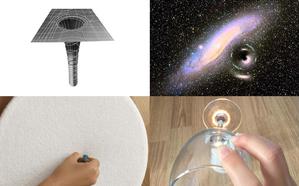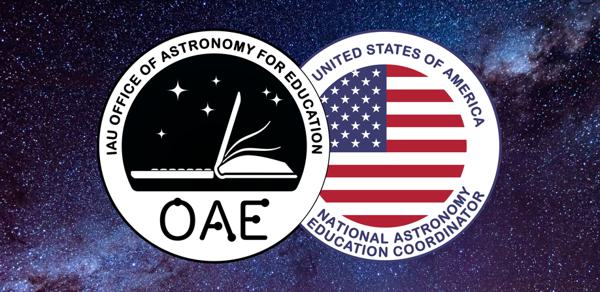Glossary term: Disco de acreción
Description: Cuando un objeto astrofísico acumula materia, a menos que la materia en caída ya se esté moviendo en línea recta hacia el objeto atrayente, no puede caer directamente sobre él. En efecto, a medida que el objeto en caída se acerca al objeto que atrae, la componente de su velocidad perpendicular a la línea que lo separa del objeto que atrae aumenta debido a la conservación del momento angular.
En muchos casos, la materia en caída se acumula en lo que se denomina un disco de acreción: un disco arremolinado de gas y polvo que rodea al objeto atrayente. Desde el borde interior del disco, la materia puede caer sobre el objeto central. Para un objeto central compacto, la materia que caiga sobre el disco de acreción habrá ganado una enorme cantidad de energía durante su caída. A medida que esta energía se deposita en el disco, éste puede calentarse hasta alcanzar temperaturas de cientos de miles o incluso millones de kelvins. Los discos de acreción alrededor de los agujeros negros supermasivos del centro de algunas galaxias proporcionan la energía necesaria para los núcleos galácticos activos (AGN). Estos objetos extremadamente brillantes pueden ser más luminosos que todas las estrellas de su galaxia anfitriona juntas.
Los discos de acreción se encuentran en diversas situaciones astrofísicas, como alrededor de agujeros negros supermasivos, remanentes estelares, explosiones de rayos gamma o protoestrellas.
Related Terms:
- Núcleo Galáctico Activo
- Black Hole
- Neutron Star
- Protostar
- Stellar Remnants
- Supermassive Black Hole
- Acreción
- Gamma Ray Burst
See this term in other languages
Term and definition status: The original definition of this term in English have been approved by a research astronomer and a teacher The translation of this term and its definition is still awaiting approval
The OAE Multilingual Glossary is a project of the IAU Office of Astronomy for Education (OAE) in collaboration with the IAU Office of Astronomy Outreach (OAO). The terms and definitions were chosen, written and reviewed by a collective effort from the OAE, the OAE Centers and Nodes, the OAE National Astronomy Education Coordinators (NAECs) and other volunteers. You can find a full list of credits here. All glossary terms and their definitions are released under a Creative Commons CC BY-4.0 license and should be credited to "IAU OAE".
If you notice a factual or translation error in this glossary term or definition then please get in touch.
Related Activities
Hunting for black holes
astroEDU educational activity (links to astroEDU website) Description: How do astronomers detect invisible black holes?
License: CC-BY-4.0 Creative Commons Reconocimiento 4.0 Internacional (CC BY 4.0) icons
Tags:
Model
, Experiment
Age Ranges:
12-14
Education Level:
Informal
, Middle School
Areas of Learning:
Modelling
, Observation based
, Problem-solving
, Social Research
Costs:
Low Cost
Duration:
45 mins
Group Size:
Group
Skills:
Constructing explanations
, Developing and using models









